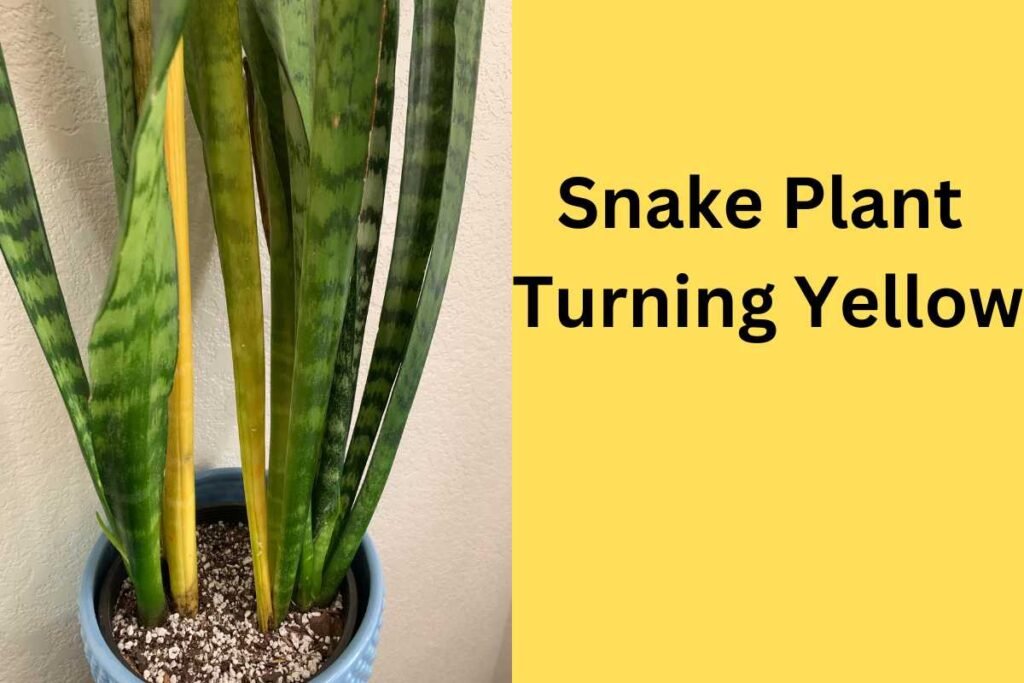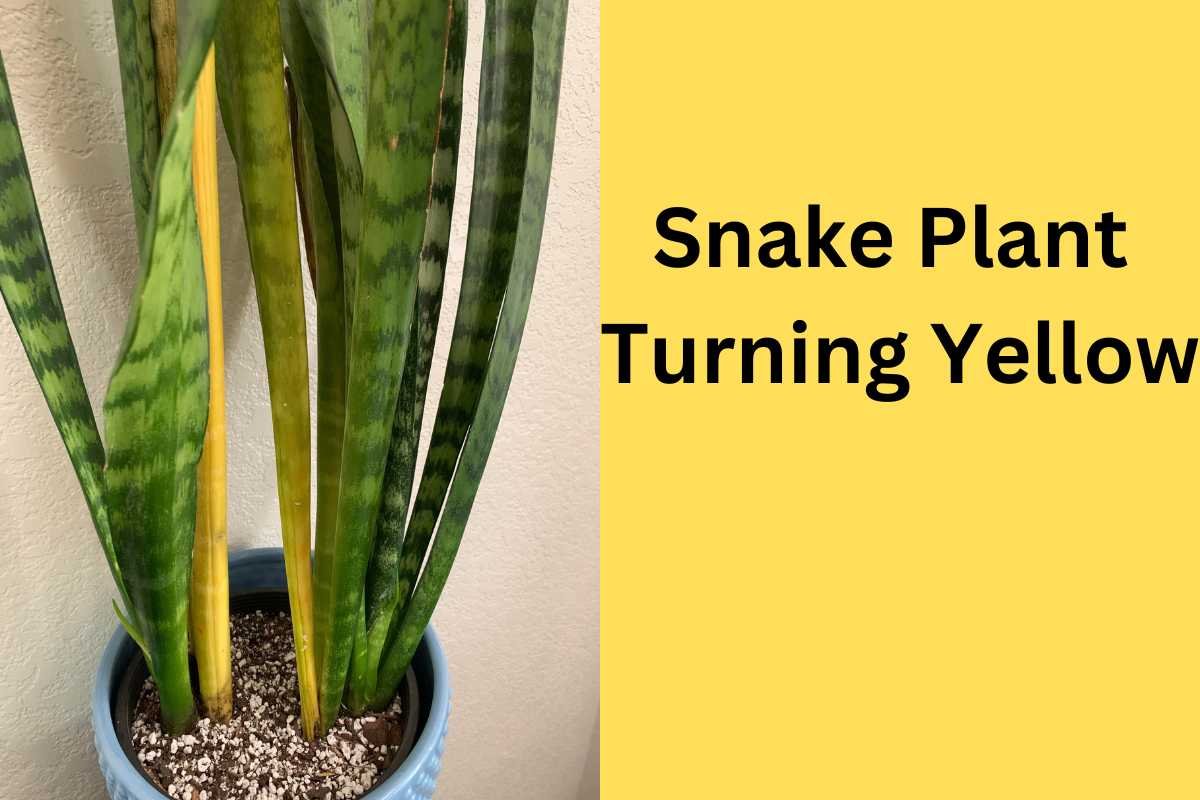The snake plant, also known as Sansevieria or mother-in-law’s tongue, is one of the most popular houseplants due to its striking appearance and low-maintenance nature.
It is highly resilient, capable of surviving under a variety of indoor conditions, and requires minimal care.
However, despite its hardiness, even the most robust snake plant can develop issues over time, one of the most common being yellowing leaves.
Yellowing leaves on a snake plant can be alarming for plant owners. This discoloration, often a sign of distress, may indicate that something is wrong with the plant’s environment, watering routine, or care practices.
In this detailed post, we’ll dive deep into the causes of yellowing leaves on snake plants, how to remedy the issue, and most importantly, how to prevent it from happening in the first place.
Table of Contents
What is a Snake Plants
The snake plant (Sansevieria trifasciata) is native to West Africa and has become a beloved houseplant worldwide, thanks to its architectural shape and minimal care requirements.
Snake plants are characterized by their tall, rigid leaves, which grow upright and can be either dark green, variegated with lighter green bands, or have yellow edges depending on the species or cultivar.
These plants are particularly known for their air-purifying qualities, making them not only a beautiful addition to any home but also beneficial to indoor air quality.
While snake plants are drought-tolerant and adaptable to various light conditions, they are not immune to problems. One of the most common concerns is the yellowing of leaves, a signal that something is wrong.

Why Is My Snake Plant Turning Yellow?
Yellow leaves on a snake plant can occur for various reasons. Understanding these causes is essential for diagnosing the issue accurately and taking appropriate corrective measures.
a. Overwatering
Overwatering is the most common reason for yellowing leaves in snake plants. Although snake plants are hardy and can survive in less-than-ideal conditions, they are susceptible to root rot when exposed to too much water.
Snake plants store water in their leaves, making them capable of withstanding periods of drought. Overwatering can lead to waterlogged soil, which deprives the roots of oxygen, ultimately causing the roots to rot and the leaves to turn yellow.
Signs of Overwatering:
- Yellowing leaves starting at the base.
- Soft, mushy leaves.
- A foul smell emanating from the soil (indicating root rot).
- Wet or soggy soil even several days after watering.
Solution: Allow the soil to dry out completely between waterings. If root rot is suspected, remove the plant from its pot, cut away the affected roots, and repot the plant in fresh, well-draining soil.
b. Underwatering
While overwatering is more common, underwatering can also lead to yellowing leaves. When a snake plant is deprived of water for an extended period, it will begin to draw moisture from its leaves to sustain the roots, causing the leaves to turn yellow and dry out.
Signs of Underwatering:
- Dry, crispy leaves.
- Yellowing starting from the tips and edges of the leaves.
- Soil that is excessively dry and hard.
Solution: Water the plant thoroughly, allowing excess water to drain out from the bottom of the pot. Moving forward, water the plant when the top 2-3 inches of soil are dry to the touch.
c. Inadequate Light
Snake plants are known for their adaptability to different light conditions, but they still have their preferences. Prolonged exposure to low light can cause the leaves to yellow and lose their vibrancy.
On the other hand, too much direct sunlight can cause sunburn, leading to yellow patches on the leaves.
Signs of Inadequate Light:
- Pale yellow leaves or leaves losing their deep green color.
- Slow growth or leggy growth.
- Leaves bending or stretching toward the light source.
Solution: Place the snake plant in bright, indirect light. While snake plants can tolerate low light, they will thrive best in moderate light conditions.
Avoid placing them in direct sunlight for extended periods, as this can cause leaf scorch.
d. Pests and Diseases
Snake plants are relatively pest-resistant, but they are not completely immune. Pests such as spider mites, aphids, and mealybugs can infest snake plants, causing the leaves to turn yellow as the pests feed on the plant’s sap.
Similarly, fungal and bacterial infections can cause yellowing leaves, often accompanied by brown or black spots, wilting, and a mushy texture.
- Yellowing leaves with small holes or specks.
- Sticky residue or webbing on the leaves.
- Dark brown or black spots on the leaves.
- A wilting or mushy appearance to the plant.
Solution: For pest infestations, wipe down the leaves with a damp cloth or apply an insecticidal soap.
If fungal or bacterial infections are suspected, remove the affected leaves and treat the plant with a fungicide. Improve air circulation around the plant to prevent future infections.
e. Temperature Stress
Snake plants prefer stable temperatures and can suffer from extreme fluctuations. Exposure to cold drafts, air conditioning vents, or sudden temperature changes can cause the leaves to turn yellow.
Similarly, if the plant is placed near a heat source like a radiator, the excessive heat can stress the plant and cause yellowing.
Signs of Temperature Stress:
- Yellowing leaves along with brown or crispy tips.
- Drooping or wilting leaves.
- Exposure to temperatures below 50°F (10°C) or excessive heat.
Solution: Keep your snake plant in a stable environment with temperatures between 60-85°F (16-29°C). Avoid placing the plant near drafty windows, heaters, or air conditioning vents.
f. Nutrient Deficiency
Snake plants do not require frequent feeding, but a prolonged lack of essential nutrients can lead to yellowing leaves.
Nitrogen deficiency, in particular, causes older leaves to turn yellow as the plant reallocates nutrients to support new growth.
Signs of Nutrient Deficiency:
- Yellowing of older leaves, especially near the base.
- Slowed growth.
- Pale or washed-out leaf color.
Solution: Fertilize your snake plant during the growing season (spring and summer) with a balanced, water-soluble houseplant fertilizer.
Be careful not to over-fertilize, as this can lead to nutrient imbalances and further damage the plant.
g. Poor Soil Conditions
The soil in which your snake plant is potted plays a crucial role in its overall health. Poorly draining soil or compacted soil can suffocate the roots and lead to yellowing leaves.
Snake plants require well-draining soil, such as a cactus or succulent mix, to prevent water retention and root rot.
Signs of Poor Soil Conditions:
- Water pooling on the soil surface.
- Slow drainage or compacted soil.
- Yellowing leaves accompanied by root rot.
Solution: Repot your snake plant in a well-draining potting mix. A mix formulated for succulents or cactus plants is ideal. Ensure the pot has drainage holes to allow excess water to escape.
h. Natural Aging
As snake plants grow, it’s natural for the older leaves near the base of the plant to yellow and die off. This is a part of the plant’s normal growth cycle and is not usually a cause for concern.
Signs of Natural Aging:
- Yellowing confined to the lower, older leaves.
- No signs of pests, diseases, or environmental stress.
Solution: Simply trim away the yellowing leaves to encourage new growth. Ensure you’re providing the plant with the right conditions to prevent premature yellowing.
How to Fix Yellowing Snake Plant Leaves
Once you’ve identified the cause of your snake plant’s yellowing leaves, you can take steps to correct the problem. Here’s how to address the most common causes:
a. Adjusting the Watering Routine
- If your plant is overwatered, allow the soil to dry completely before watering again.
- For underwatered plants, rehydrate the soil by thoroughly watering, ensuring excess water drains away.
b. Correcting Light Exposure
- Move your snake plant to an area with bright, indirect light if it’s been kept in low light.
- If sunburn is the issue, relocate the plant to a shaded spot with indirect light.
c. Managing Temperature and Humidity
- Maintain stable indoor temperatures between 60-85°F.
- Avoid placing your snake plant near drafts or heat sources.
d. Treating Pests and Diseases
- Use insecticidal soap or neem oil to remove pests.
- Prune diseased leaves and improve air circulation.
e. Addressing Nutrient Deficiency
- Fertilize your snake plant during the growing season with a balanced fertilizer.
- Avoid over-fertilizing, which can cause nutrient burn.
f. Repotting and Soil Care
- Repot the snake plant in well-draining, fresh soil every 2-3 years.
- Use a pot with drainage holes to prevent water buildup.
Preventing Yellowing Leaves in the Future
To prevent yellowing leaves in the future, maintain a consistent care routine for your snake plant:
- Water: Water sparingly, allowing the soil to dry out between waterings.
- Light: Place your plant in bright, indirect light.
- Soil: Use well-draining soil, and ensure the pot has drainage holes.
- Temperature: Keep the plant in a stable environment, avoiding extremes.
- Fertilizer: Feed your snake plant during the growing season with a balanced fertilizer.
FAQs About Snake Plant Care
Q: How often should I water my snake plant?
A: Water your snake plant when the top 2-3 inches of soil are dry, typically every 2-4 weeks depending on the climate and season.
Q: Can yellow snake plant leaves turn green again?
A: Unfortunately, once a leaf turns yellow, it won’t regain its green color. You can trim away the yellowing leaves to encourage new, healthy growth.
Q: Is it normal for snake plant leaves to curl?
A: Curling leaves may be a sign of underwatering, pest infestations, or environmental stress. Ensure your plant is receiving the proper care.
Conclusion
Yellowing leaves on a snake plant are a signal that the plant needs attention. By understanding the causes—whether it’s overwatering, inadequate light, pests, or nutrient deficiencies—you can take steps to restore your plant’s health.
With proper care, your snake plant will thrive, bringing both beauty and air-purifying benefits to your home for years to come.
Keep a close eye on your plant’s environment and watering routine to prevent yellowing leaves, and you’ll enjoy a healthy, vibrant snake plant that brightens up your space.
My name is Shahriar Robin, and my journey with plants began in childhood, igniting a lifelong passion that blossomed alongside my career as a nutritionist and sports trainer. Through SnakePlant.org, I channel this dedication, merging expertise from nutrition and sports training to nurture a platform sharing all-encompassing knowledge about Snake plants. This website mirrors my commitment to cultivating greenery, offering comprehensive insights on growth, maintenance, and nurturing practices for these captivating plants. My mission is rooted in leveraging diverse expertise to enhance plant care practices, believing profoundly in the therapeutic impact of nature. Join me on SnakePlant.org, where I unite a thriving community of enthusiasts, sharing experiences, insights, and the profound joys of planting.

